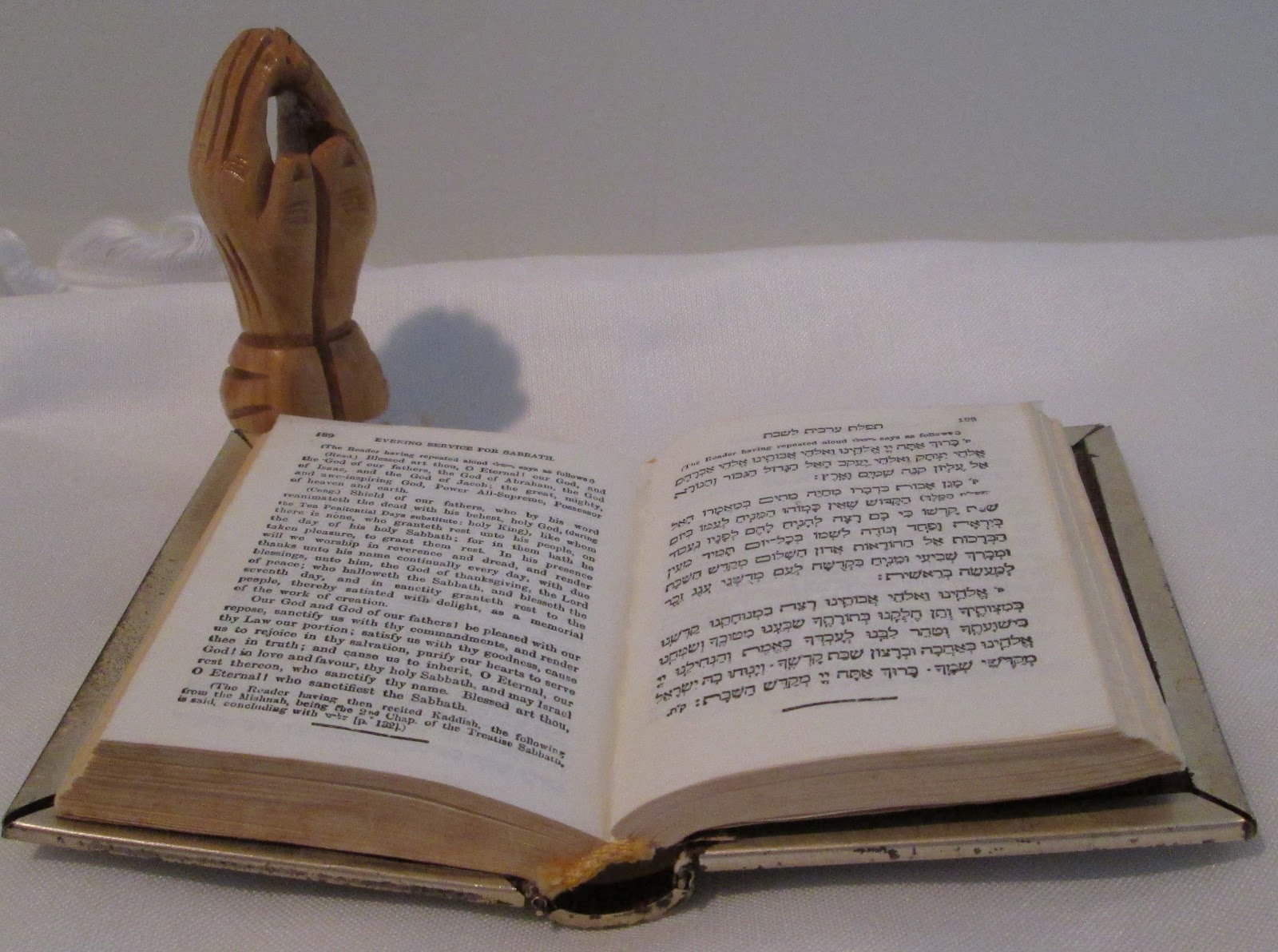The Holy Place is close to God. It is a room within the early Tabernacle of Moses and was enlarged when Solomon built the Temple. The room is situated to the east of the Holy of Holies, separated only by the veil. This space was designed for personal time with God as evidenced by the fact that when priests entered to do their service they came one at a time and departed before the next person entered.
The Holy Place of the Temple contained three (or as enlarged by Solomon three types of) items: the seven branched menorah, the table of shewbread and the altar of incense. These three items speak of God’s personal care for His people and the desire for relationship. The room is designed to convey God’s desire care and desire for fellowship with every individual, whether in the actual Temple or elsewhere.
 |
| The Menorah from the cover of a prayer book |
The menorah casts light within what would otherwise be a dark room. The seven candles help people recall God’s establishment of light on the first day of creation. The first chapter of the Bible contains the words, “God said, ‘Let there be light,’ and there was light. God saw that the light was good.” The seven lamps recall the seven days of creation, and of each week. We are to allow God to shine into our lives seven days a week.
King David said, “You, Lord, keep my lamp burning; my God turns my darkness into light.” (Psalm 18:28) Isaiah wrote, “the Lord will be your everlasting light, and your God will be your glory.” (60:19) God desires that we allow Him to shine through us, and for the Priest to be guided by God’s light.
 |
| Unleavened bread - 12 loaves were on the table |
The Table of the Shewbread is a reminder of God’s fellowship with us. People who eat together have stronger ties because of the conversation that goes on around the table. God desires to be at our table and in our lives. We must allow God to dwell with us and abide in us. “Man does not live on bread alone, but on every word that comes from the mouth of the LORD.” (Dt 8:3; Mt 4:4)
 |
| A prayer book and praying hands |
The altar of incense represents prayers that rise up to God. The fuel for the altar comes from figwood that burns on the brazen altar each day. This absorbs the sacrifices made during the day, and intermingles them with the incense that rises through the veil to the Holy of Holies. God loves it when we pray, and speak to Him. As Zechariah tended the Altar of Incense, he sensed God’s presence, and was in prayer. It was at this place that the Angel Gabriel entered the room and told John that Elizabeth would have a son.
The Holy Place is where the priest could meet with God as he served in the Temple. A meeting with God depends on open hearts and the personal desire to be in fellowship with God.
 |
| Order this book at Amazon.com |
You can read more about the meeting between Zechariah and Gabriel in the book
Advent Journeys, available as a book, as a
Kindle e-book, and readable through Amazon Prime)



No comments:
Post a Comment